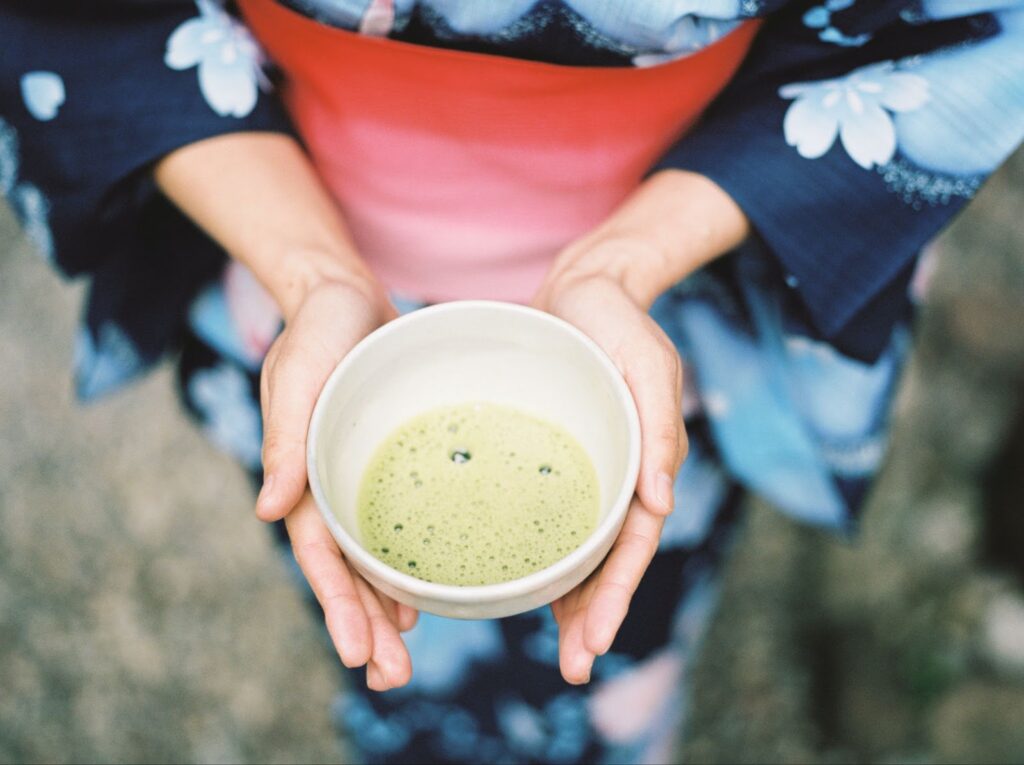Tea ceremonies have been at the heart of Japanese culture for centuries. Far from being a mere beverage, tea in Japan symbolizes a connection to spiritual practices, art, and social status. The way of tea, or “Chanoyu,” is a graceful and meditative ritual that speaks of a culture steeped in tradition, aesthetics, and a deep respect for nature.
The History and Evolution of Chanoyu
Early Beginnings
The origins of the Japanese tea ceremony can be traced back to China. Buddhist monks, who traveled between Japan and China, introduced tea as a medicinal herb to the Japanese imperial court in the 9th century. Over time, tea became a symbol of status among the Japanese nobility. During the 12th century, Eisai, a Japanese monk, brought back not only Zen Buddhism from China but also the custom of drinking tea. This was the beginning of a deep connection between Zen and tea in Japan, making tea an integral part of monastic life.
The Way of Tea Flourishes
In the 16th century, Sen no Rikyu, considered the historical figure most associated with the development of the tea ceremony, perfected the art form. He established the principles of harmony (wa), respect (kei), purity (sei), and tranquility (jaku), which remain central to the tea ceremony today. Sen no Rikyu’s philosophy focused on simplicity and the appreciation of the imperfect, encapsulating the idea of “Wabi-sabi.” This concept values the transient beauty in the mundane and everyday life.
The Art of the Tea Ceremony: Rituals, Utensils, and Meanings
Preparing for the Ceremony
The tea ceremony is a choreographed ritual where every movement and detail has profound meaning. It begins with a careful preparation of the tea room. Traditional tea rooms are minimalist and incorporate natural elements like bamboo and stone. The utensils used in the ceremony are meticulously selected, cleaned, and placed.
The Ceremony Itself
Upon arrival, guests are served a small meal, followed by sweets, to counterbalance the bitter taste of the tea. The host then begins the process of making the tea, with precise movements and steps, focusing on grace and mindfulness. The type of tea used is a powdered green tea known as “Matcha.” Guests are expected to observe strict etiquette, including how to take the bowl, how to drink, and how to interact with the host and other guests.
Utensils and Aesthetics
The utensils used in the tea ceremony are considered works of art. From the tea caddy to the whisk and bowls, each item is carefully crafted and often handed down through generations.

The Modern Tea Ceremony: Adapting and Thriving
Though deeply rooted in tradition, the Japanese tea ceremony is not a relic of the past. It continues to evolve, adapting to modern life while preserving its core principles. The ceremony is no longer restricted to elite tea masters but is practiced by people of all walks of life. Many schools in Japan offer courses in “Chanoyu,” and the ritual continues to be a popular cultural experience for tourists. The values of mindfulness, respect for nature, and connection to one’s inner self resonate even in the bustling modern world.
The Global Influence of Japanese Tea Ceremony
The profound beauty and philosophy of the Japanese tea ceremony have not remained confined to Japan’s borders. Its influence can be seen across the globe, impacting not just the way tea is perceived and consumed but also influencing art, design, and social practices.
A Unifying Experience Across Cultures
The tea ceremony has transcended cultural boundaries, offering a unifying experience that resonates with people from various backgrounds. Its emphasis on mindfulness, respect, and harmony aligns well with contemporary global values. Many tea enthusiasts and scholars outside Japan have devoted themselves to studying this art, and some have even trained under Japanese tea masters.
Influence on Art and Design
The aesthetics of the tea ceremony, especially the principles of “Wabi-sabi” and the meticulous design of utensils, have found expression in contemporary art and design. From interior design to fashion and culinary arts, the minimalist and nature-inspired philosophy of the tea ceremony can be seen in various forms.
A Tool for Diplomacy
Tea diplomacy has been an unexpected but significant aspect of the ceremony’s international influence. The shared experience of tea can foster dialogue and connection, transcending political or cultural barriers. Various governments and organizations have utilized the ceremony to build bridges and foster understanding between different countries and cultures.
Tea Tourism and Education
In recent years, the popularity of tea tourism has surged. Travelers from around the world come to Japan to experience the tea ceremony first-hand. Numerous tea schools and cultural centers across Japan and beyond offer lessons and demonstrations, making this ancient art accessible to a global audience.
Conclusion
The way of tea is more than a mere ritual; it’s a philosophy that embodies Japanese culture, aesthetics, and spiritual thought. Through the deliberate act of preparing and consuming tea, it teaches us to slow down, to appreciate the transient beauty of life, and to connect with others and ourselves on a profound level. From its medicinal beginnings to its elevation as an art form, the tea ceremony is a unique journey into Japanese culture. It’s a pathway to understanding not only the historical aspects of Japan but also the underlying values that continue to shape the nation’s identity today. In the end, a cup of tea is not just a cup of tea. In Japan, it’s a world of meaning, beauty, and wisdom. And the journey of understanding this fascinating world is as enriching and profound as the ceremony itself.
